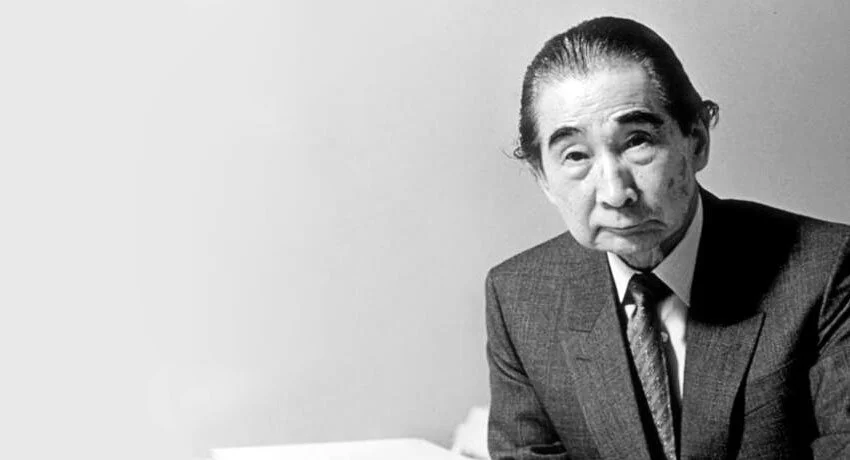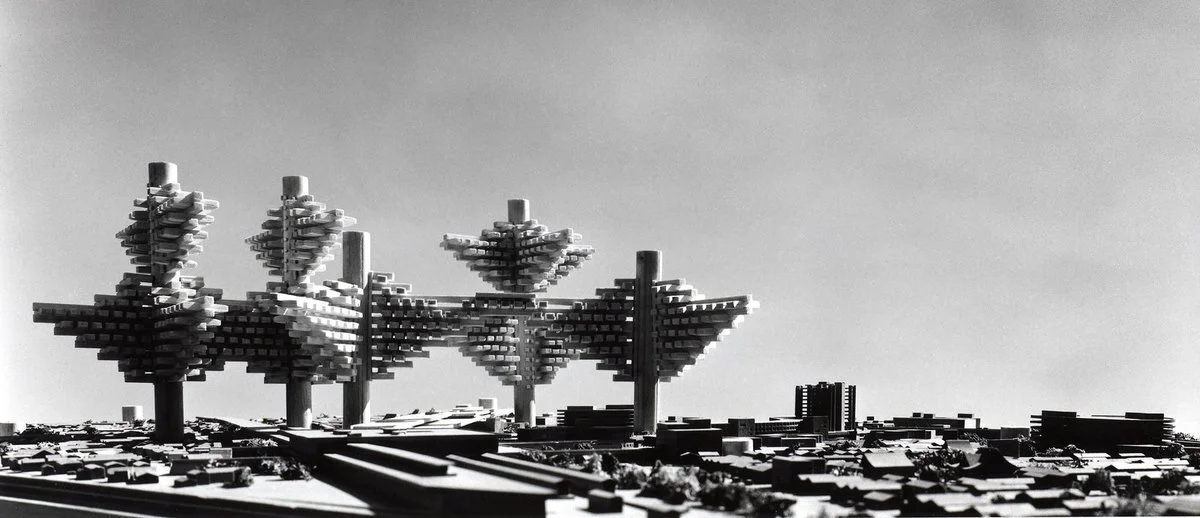NAKAGIN CAPSULE: an endangered species
The Nakagin Capsule Tower is one of the most iconic buildings in Tokyo and stands as a monument to the influential Metabolist movement that hugely innovated architecture in Japan, primarily in the 1960s & 70s. Designed by Kisho Kurokawa, one of the founders of the Metabolist movement - the tower was built in 1972 with construction lasting only 30 days.
The tower was originally designed around the concept of replacing the capsules every 25 years to ensure maintainability of the building and yet this has never taken place. The building has largely fallen into disrepair in recent years and with the sale of the land in 2018 to a company who intends to redevelop - the future doesn’t look good for Nakagin. Read on below to discover some of the back story and the magnificence of this structure.
the nakagin capsule tower in shimbashi, tokyo
Metabolism in Tokyo
Kenzo Tange, one of the most important Japanese architects of the 20th century, was famed for his focus on combining traditional Japanese architectural concepts with the emerging modernist techniques being put forward by figures in the West such as Le Corbusier. He initially worked as an architect in Manchuria during the war but really burst onto the scene in the postwar period when his design was selected for the Hiroshima Peace Memorial Museum in 1950. The symmetrical and rough concrete structure was designed to be simple - so that it could take nothing away from the contents of the museum - and it stands to this day as a truly spectacular example of architecture.
kenzo tange later in life | source: archeyes
Tange became a father figure in Japanese architecture after the war and returned to his alma mater, Tokyo University, to teach architecture & urban design. It was here that the “Tange Laboratory” began, an informal name for Tange’s classroom that became a melting pot for radical ideas & the shaping of future architects.
It was in this Laboratory that the origins of Metabolism were seen. A handful of Tange’s students, among them Kurokawa Kisho, elaborated on the modernist concepts that they had studied under their teacher and took it further.
Metabolism took the fundamental modernist notions of utilitarianism, mass construction and celebrating a structures true form. The innovation in metabolism was to combine these concepts with a philosophy based around organic growth. Structures were to become living things that could undergo growth in line with the rapid expansion of the Tokyo metropolitan area.
the metabolist group’s radical plan for a Space City | source: archdaily
The Metabolist group formally emerged at the Tokyo World Design Conference in 1960 when their manifesto, Metabolism: The Proposals for New Urbanism, was sold at the door and presented the groups radical new ideas for cities floating in the ocean (Ocean City) or towering into the sky in huge cruciforms (Space City).
Kurokawa Kisho & the Nakagin Capsule Tower
Kurokawa joined Tange’s lab as a masters student in 1957 and it wasn’t long before he stood out as one of the most promising young architects. As one of the founding members of the Metabolists, his career skyrocketed and he dropped out of the university in 1964, halfway towards obtaining his doctorate.
kurokawa kisho | source: Kurita Kaku/Getty Images
Kurokawa’s personal design philosophy was focused on the concepts of:
Impermanence - buildings should be removable, interchangeable and adaptable
Materiality - celebrating the natural state of a material
Receptivity - allowing his own design philosophy to be influenced by other ideas
Detail - following the traditional Japanese practice of attention to detail
Sustainability - eco-friendly and sustainable structures to welcome a transition from an “Age of Machine” to an “Age of Life”
His philosophy developed over the course of the 1960’s and climaxed in 1972 when he designed the Nakagin Capsule Tower, arguably the purest embodiment of the Metabolist principles.
the nakagin tower’s replaceable capsules up close
The tower is home to 140 individual 4 x 2.5 meter prefabricated capsules, each with a 1.3m diameter window at one end. Following the Metabolist principles of growth and adaptability, the capsules can be rearranged to create larger spaces and were initially designed with a life expectancy of 25 years. After this, Kurokawa envisioned that the capsules would be swapped out - creating a building that can be perpetually renewed and adapt as needed.
the approach to the capsule tower (2021)
The capsules were initially designed around the purpose of housing traveling salarymen so that they could have a simplistic base in central Tokyo with all of the necessary amenities for daily life. Each capsule was therefore prefabricated a wall of appliances and cabinets, including a kitchen stove, a refrigerator, a television set, and a tape deck.
the circular windows of each capsule
The Metabolist movement disbanded in Japan in the early 70’s and the founders went their own way, mostly internationally, developing their own schools of thought. The Nakagin Capsule Tower therefore stands as a monument - one of the purest achievements of the Metabolist movement in Tokyo.
Demolition on the horizon
Entering the 21st century, the tower had largely fallen into a state of disrepair and the idea of demolition was first floated in 2006. The funds for replacement of the capsules has never been successfully raised and with the passing of Kurokawa in 2007, the issue of finding an architect to take on the project also become a problem.
the exterior of the tower today - stained and covered in a net after one of the windows fell to the street below
In mid 2007, more than 80% of the tenants of the tower voted in favor of demolition for the first time - reaching the required threshold to seriously consider tearing the structure down. Due to neglect, residency within the tower has become uncomfortable with many tenants complaining of the squalid conditions and concerns over asbestos. Hot water was shut off to the building in 2010 and the building now stands, covered in a mesh net due to an incident in which one of the windows fell to the street below.
Some tenants, such as Masato Abe, are campaigning to save the structure and attempting to raise funds from around the world in order to buy out the capsules. With the sale of the land and 16 capsules to a limited liability company in 2018, the future is looking increasingly dim for the tower.
While the structure is undeniably a feat of architecture and beautiful to look at, it’s likely that Kurokawa himself would hate to see the tower still standing in the state it’s in. Clinging on to the tower as it stands goes against all of the principles of organic growth that the Metabolists founded their designs on. If the capsules aren’t to be replaced, it seems that completely demolishing the structure and allowing the city to grow from its ashes would be more respectful to Kurokawa’s legacy.








